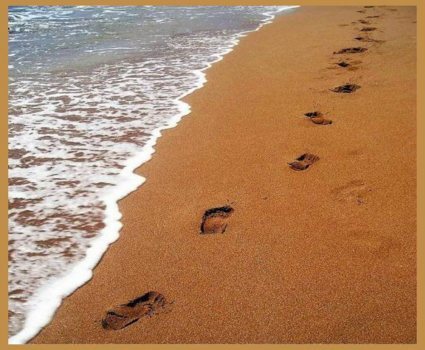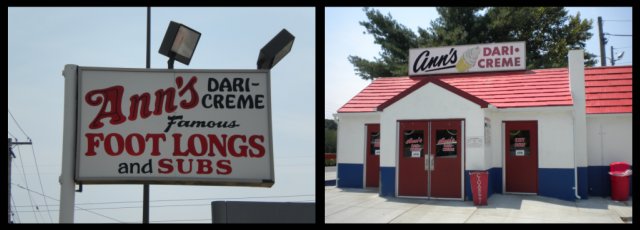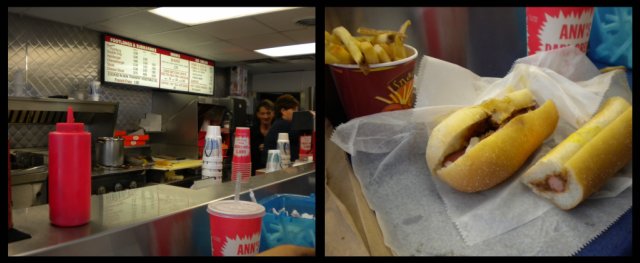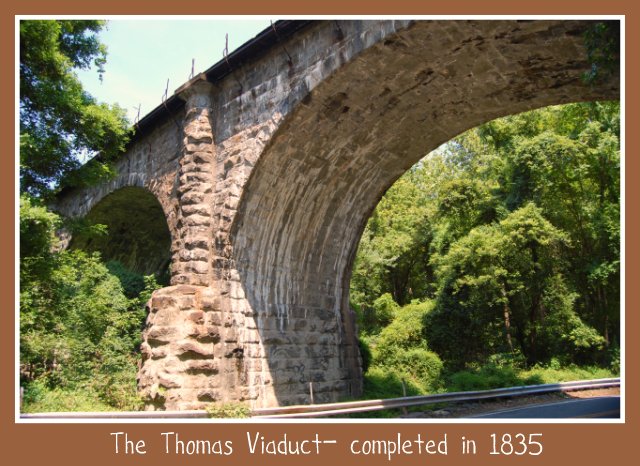This is one place Guy Fieri hasn't discovered...yet. It looks like a dive- but wait until you get inside!
Ann's Dari-Creme opened in 1951 in Glen Burnie (about 20 miles east of us) and has been a popular eatery for the locals. Nestled next to a large modern shopping mall that opened in the 1980's, Ann's Dari-Creme looks a little out of place but Ann's owners opted not to move- much to the delight of the locals. In fact, there are photographs on the wall of long-time customers who have taken their Ann's Footlongs (specially wrapped, off course) as far away as southern California (to eat on the beach!). And a soldier stationed in Afghanistan took his with him but ended up eating it somewhere in Africa before he arrived in Afghanistan because it smelled sooooo good (aren't you glad you weren't on that plane?). So what makes this such a popular spot?
Yeah, it's still a dive when you get inside! But it's clean and the food is great! We had Footlongs with everything (mustard, chili and onions), fries and a soda. The buns were delicious- as was the rest of our lunch!
As soon as you walk in the door, you are in line to order. I think the most important qualification for working at Ann's Dari-Creme is a great memory. After giving your order to the cashier, she turns around to tell the "cooks." No one writes it down, there is no electronic order board and the cashier keeps taking orders as long as there are people in line. While we were there, we watched them juggle as many as five or six orders at a time- and some were long and complex- without a single mistake. The women who work there seem to enjoy their job and have fun doing it. There are eight counter seats (that is the total inside seating!) and we were fortunate enough to get two seats together to watch "the show" while we ate. We'll have to go back to try the chocolate-dipped ice cream cones or a cherry milkshake- they looked fabulous!
Nothing says the 1950's like a dancing hotdog!
After lunch we headed to the tiny hamlet of Relay (just west of Elkridge) to see the Thomas Viaduct we had heard so much about at the B&O Railroad Museum a few weeks ago. The 612-foot bridge spans the Patapsco River between Elkridge and Relay and is the first multi-span (there are eight spans) masonry railroad bridge to be built on a curve. Many doubted such a bridge could be built and often jokingly called it "Latrobe's Folly" (Benjamin Latrobe was the designer) because they were skeptical it could even support its own weight. History, however, has had the last laugh since it not only survived the great flood of 1868 and Hurricane Agnes in 1972, it is still in use today carrying 300-ton diesel locomotive passenger trains (the MARC Camden line) and heavy freight trains every day.
Although we couldn't find a place to view the entire viaduct, the part we could see was huge! As I took pictures, I was thinking about how old this structure is and what it would be like to build it in the 1830's without computer projections and heavy equipment (bulldozers, cement mixers, etc.). I wonder if modern transportation structures (freeways, bridges, etc.) will be not only photographed but also in daily use 175 years from now... I doubt it. The bridge was constructed using rough-dressed Maryland granite ashlar from Patapsco River quarries and took two years to complete at a cost of a little less than $143,000 (more than $2.8 million in today's dollars). It was the largest bridge in the nation when it was built and today remains the world's largest bridge of its kind as well as the world's oldest multiple-arched stone railroad bridge. Some folly!





No comments:
Post a Comment